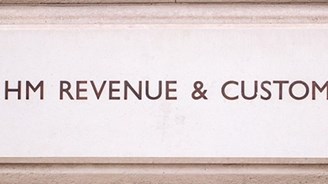The temporary reduced rating explained

From 15 July 2020 until 12 January 2021 certain supplies of hospitality, accommodation and admission to attractions will be subject to VAT at 5%. This measure was announced during the Chancellor’s Summer Statement on 8 July, and is intended to support businesses affected by the enforced closures and social distancing measures necessitated by the COVID-19 pandemic. More information on the temporary reduced rating can be found here.
Which supplies can be reduced-rated?
Hospitality
- Supplies of food and non-alcoholic drinks for consumption on the same premises on which they were supplied. Generally speaking, this would mean a meal eaten in a restaurant or a cup of tea in a café. VAT Notice 709/1 – Catering and Takeaway Food, defines “premises” as “the areas occupied by the food retailer or, any area set aside for the consumption of food by the food retailers’ customers, whether or not the area may also be used by the customers of other food retailers”.
- Hot takeaway food (cold takeaway food is already zero-rated, but note that sales of confectionery remain standard-rated).
- Hot takeaway drinks (cold takeaway soft drinks remain standard-rated).
Accommodation
- The provision of sleeping accommodation in hotels, inns, boarding houses and similar establishments.
- The grant of a license to occupy holiday accommodation
- Charges for seasonal pitches for caravans - including supplies of facilities provided in relation to the occupation of the pitches
- Charges for pitches for tents and camping facilities
Notice 709/3 – Hotels and Holiday Accommodation defines “hotels, inns and boarding houses” as:
“Commercial establishments providing lodging (furnished sleeping accommodation) and possibly meals and other facilities such as laundry services, communal TV or rest rooms and phone services for guests and visitors.
An establishment does not have to provide food or other facilities to be regarded as a hotel, inn or boarding house”;
And “similar establishments” as:
“Establishments with similar characteristics to hotels, inns and boarding houses, and any premises, in which furnished sleeping accommodation is provided, that are used by or held out as being suitable for use by visitors or travellers (but not if such use is only occasional).
This includes motels, guesthouses, bed and breakfast establishments, private residential clubs, hostels, and serviced flats (other than those for permanent residential use)”.
Attractions
The temporary reduced rating applies to businesses that make supplies of admissions that are currently taxable at the standard rate. HMRC’s guidance, “VAT on Admission Charges to Attractions” includes the following examples:
- shows
- theatres
- circuses
- fairs
- amusement parks
- concerts
- museums
- zoos
- cinemas
- exhibitions
- similar cultural events and facilities
- planetariums
- botanical gardens
- studio tours
- factory tours
Admission fees to sporting events are specifically excluded from the reduced rating.
The reduced rating does not include admission fees to museums, galleries, art exhibitions or zoos, or theatrical, musical or choreographic performances of a cultural nature, when supplied by a public or not-for-profit body; such supplies are already exempt under Items 1 or 2 of Group 13 of Schedule 9 to VAT Act 1994.
This temporary reduced rate only applies to admission fees, but where goods are part of the admission fee and are incidental to the main supply, the whole supply is eligible for the temporary reduced rate. HMRC’s guidance cites the example of an admission to an event such as an exhibition that includes an incidental supply of a brochure or activity book. This would be a single reduced rated supply.
Other issues arising from the temporary reduced rating
Will customers see price reductions?
It’s hard to predict if the VAT reduction will be reflect in reduced consumer prices, because the measure was presented as a way of helping the sector, not the consumer. For a struggling hospitality business to benefit most from this measure they would maintain current prices but only pay the 5% VAT element over to HMRC. This practice may draw the ire of consumers, however, so it’s likely that we’ll see a combination of the two strategies.
Flat rate scheme
HMRC’s guidance on the temporary reduced rating advises that certain flat rate scheme percentages have been reduced in line with the temporary reduced rate of VAT. However, at the time of writing this article, the flat rate scheme trade sector percentages in VAT Notice 733 – The Flat Rate Scheme for Small Businesses had not been reduced.
Transitional measures
There may be situations where a supply takes place on or after 15 July 2020, but payment is received or an invoice is issued before this date. If the normal tax point rules are followed, the date of the payment or invoice would become the tax point date for the supply, meaning it would be subject to VAT at 20%. In cases when there is a change of VAT rate, it is possible to use the special provisions in the VAT Act 1994 that allow the supplier to treat the date of supply as the tax point, making the supply reduced-rated.



